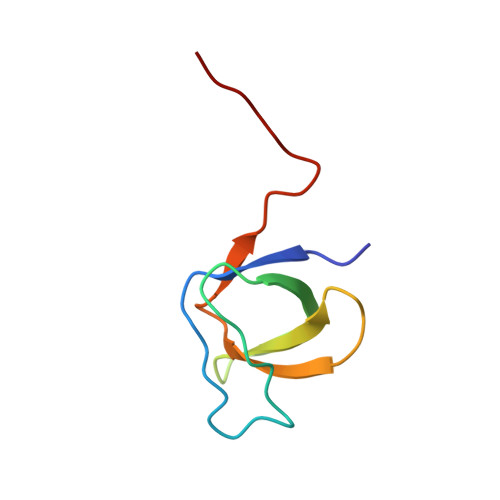New approaches to high-throughput structure characterization of SH3 complexes: the example of Myosin-3 and Myosin-5 SH3 domains from S. cerevisiae.
Musi, V., Birdsall, B., Fernandez-Ballester, G., Guerrini, R., Salvatori, S., Serrano, L., Pastore, A.(2006) Protein Sci 15: 795-807
- PubMed: 16600966
- DOI: https://doi.org/10.1110/ps.051785506
- Primary Citation of Related Structures:
2BTT - PubMed Abstract:
SH3 domains are small protein modules that are involved in protein-protein interactions in several essential metabolic pathways. The availability of the complete genome and the limited number of clearly identifiable SH3 domains make the yeast Saccharomyces cerevisae an ideal proteomic-based model system to investigate the structural rules dictating the SH3-mediated protein interactions and to develop new tools to assist these studies. In the present work, we have determined the solution structure of the SH3 domain from Myo3 and modeled by homology that of the highly homologous Myo5, two myosins implicated in actin polymerization. We have then implemented an integrated approach that makes use of experimental and computational methods to characterize their binding properties. While accommodating their targets in the classical groove, the two domains have selectivity in both orientation and sequence specificity of the target peptides. From our study, we propose a consensus sequence that may provide a useful guideline to identify new natural partners and suggest a strategy of more general applicability that may be of use in other structural proteomic studies.
- National Institute for Medical Research, London NW71AA, United Kingdom.
Organizational Affiliation:
















